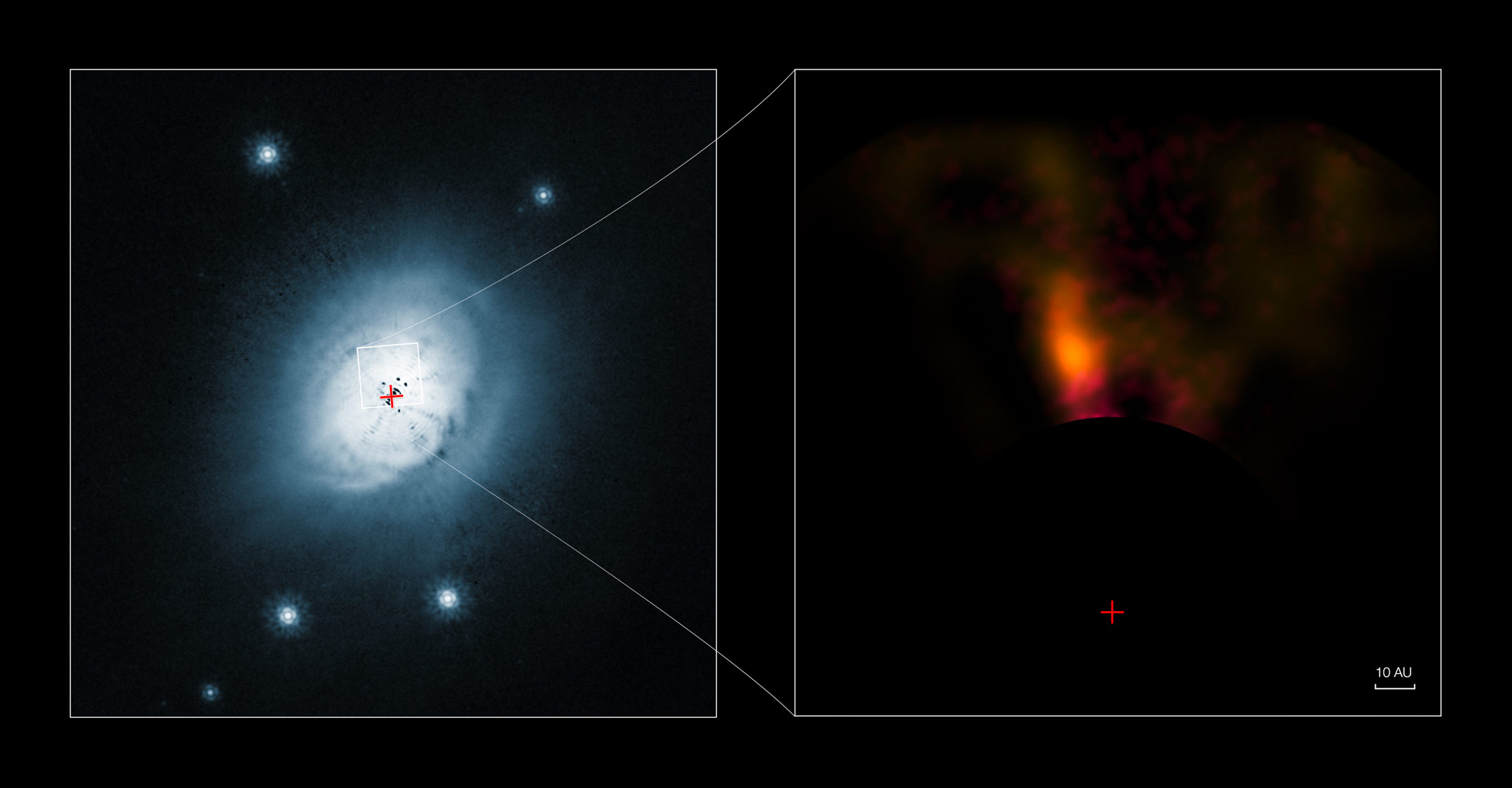| Online: | |
| Visits: | |
| Stories: |
Is This a Baby Picture of a Giant Planet?
Discussions concerning all matters of humanity’s ascension into a higher dimensional existence culminating in 2012
 |
| Hubble optical image (left) and VLT infrared image (right) of the circumstellar disk surrounding HD 100546. (ESO/NASA/ESA/Ardila et al.) |
Excerpt from news.discovery.com
Mommy, where do baby planets come from? There’s no storks, birds, bees, or romantic dinners for two involved in the answer to that question — regardless of size, planets are all formed in pretty much the same way: through the aggregation of material within the disk of dust and gas surrounding a young star. While how long it actually takes and just what sort of planets are most likely to form where are still topics of discussion among astronomers, the birth process of a planet is fairly well understood.
And this may be the very first image of it actually happening.
Acquired by the European Southern Observatory’s Very Large Telescope (VLT), the infrared image above (right) shows a portion of the disk of gas and dust around the star HD100546, located 335 light-years away in the constellation Musca. By physically blocking out the light from the star itself by means of an opaque screen — seen along the left side of the image — the light from the protoplanetary disk around HD 100546 can be seen, revealing a large bright clump that’s thought to be a planet in the process of formation.
If it is indeed a baby planet, it’s a big one — as large as, or perhaps even larger than, Jupiter.

This does raise an interesting question for astronomers because if it is a Jupiter-sized planet, it’s awfully far from its star… at least according to many current models of planetary formation. About 68 times as far from HD100546 as we are from the sun, if this planet were in our solar system it’d be located deep in the Kuiper Belt, twice as far as Pluto. That’s not where one would typically expect to find gas giants, so it’s been hypothesized that this protoplanet might have migrated outwards after initially forming closer to the star… perhaps “kicked out” by gravitational interaction with an even more massive planet.
Alternatively, it may not be a planet at all — the bright blob in the VLT image might be coming from a much more distant source. While extremely unlikely, further research will be needed to rule that possibility out.
If it’s found to be a planet, HD100546 “b” would offer scientists an unprecedented opportunity to observe a planetary formation process in action — and from a relatively close proximity as well.
According to the team’s paper, submitted to Astrophysical Journal Letters, ”What makes HD100546 particularly interesting is that 1. it would be the first imaged protoplanet that is still embedded in the gas and dust disk of its host star; and 2. it would show that planet formation does occur at large orbital separations.”
(Now all we have to do is wait a couple billion years and then show these pictures to HD100546b’s girlfriend. How embarrassing!) http://ascensionearth2012.blogspot.com
Source: http://www.ascensionearth2012.org/2015/03/is-this-baby-picture-of-giant-planet.html




